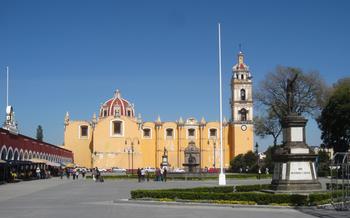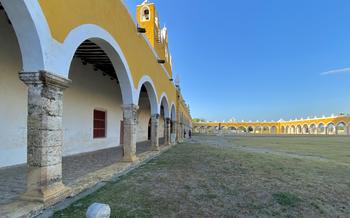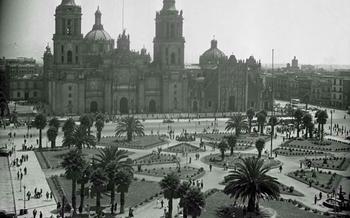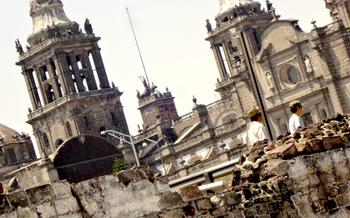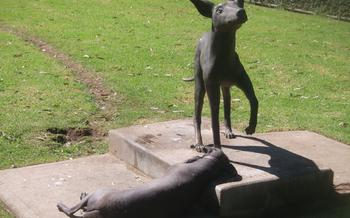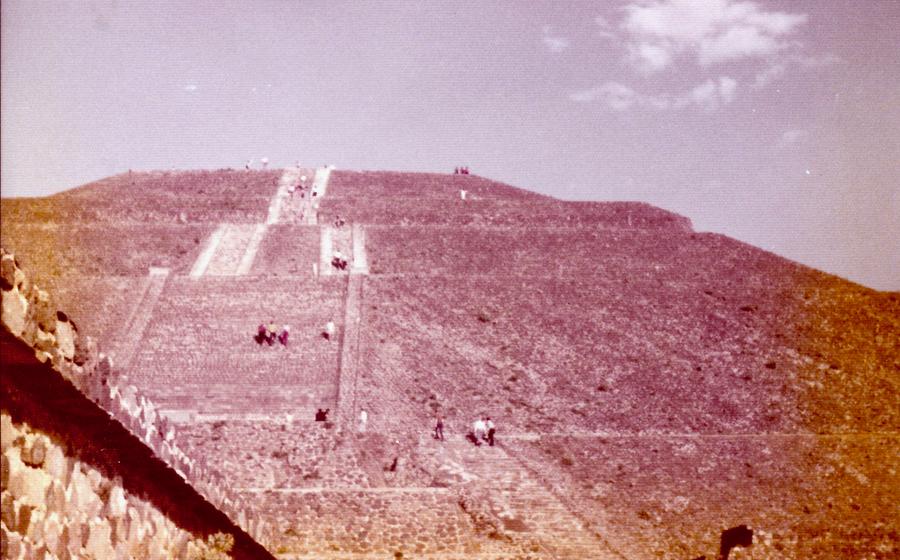
Pulque Farms in Hidalgo
- A Trip to the Pulque Farms in Hidalgo: A Journey into Mexican Tradition
- Plan Your Pulque Adventure: A Guide for Travelers
- stands as a testament to the deep-rooted pulque tradition in Mexico. With its rich history and vibrant pulque culture, Apan has become a haven for pulque enthusiasts from around the world.
- Unveiling the Secrets of Hacienda Pulquera
- Meet the Master Pulqueros: Artisans Behind the Nectar
- Savor the Flavors: A Culinary Journey with Pulque
- Indulge in Pulque Therapy: A Health and Wellness Retreat
- Rejuvenating Pulque Spas and Wellness Centers
- Traditional Pulque Healing Practices
- Incorporating Pulque into a Healthy Lifestyle
- Discover the Pulque Route: A Journey Through History and Tradition
- Unveiling the Secrets of Pulque Fermentation
- Pulque and Sustainability: A Journey Towards Eco-Friendly Farming
- Pulque and the Arts: A Creative Fusion
- Pulque and Social Impact: Empowering Communities Through Tradition
- Pulque and Gender: A Tale of Empowerment and Inclusion
- Pulque in Modern Gastronomy: A Culinary Revolution
- Insider Tip: Unforgettable Pulque Experiences
A Trip to the Pulque Farms in Hidalgo: A Journey into Mexican Tradition
Pulque, a traditional Mexican alcoholic beverage made from fermented maguey sap, holds a unique place in Mexican history and culture. Its origins can be traced back to pre-Hispanic times, where it was considered a sacred drink used in religious ceremonies and rituals. The production of pulque flourished during the colonial era, and it became a popular beverage among both indigenous communities and Spanish settlers. Today, pulque continues to be an important part of Mexican culture, with Hidalgo being one of the main pulque-producing regions in the country.
Pulque is made from the fermented sap of the maguey plant, also known as the agave. The process involves harvesting the sap from the heart of the maguey, which is then collected in containers and left to ferment naturally. The fermentation process, which takes several days, is triggered by wild yeasts present in the air and on the maguey plant itself. The resulting beverage is a milky, slightly viscous liquid with a unique flavor and aroma.
Pulque is not only a delicious beverage but also offers several nutritional benefits. It is a good source of prebiotics, which are beneficial for gut health, and also contains vitamins, minerals, and amino acids. Traditionally, pulque has been used in Mexican folk medicine for its purported health benefits, such as improving digestion, boosting the immune system, and promoting overall well-being.
Plan Your Pulque Adventure: A Guide for Travelers
Planning a trip to explore the pulque farms in Hidalgo is an enriching experience that immerses you in Mexican culture and traditions. Here's a comprehensive guide to ensure a smooth and unforgettable adventure:
-
Best Time to Visit: The ideal time to visit Hidalgo for pulque is during the dry season, from November to April, when the weather is pleasant, and the roads are dry, making for a more enjoyable trip.
-
Transportation Options: Traveling to Hidalgo is convenient, with various options available. You can fly into Mexico City's Benito Juárez International Airport and take a bus or rent a car to reach Hidalgo. Buses are a budget-friendly option, while renting a car provides flexibility and allows you to explore the region at your own pace.
-
Accommodation and Dining Suggestions: Apan, the heart of pulque production in Hidalgo, offers a range of accommodation options, from charming haciendas to cozy guesthouses. As for dining, be sure to savor the local cuisine, which often incorporates pulque in traditional dishes. Don't miss out on "mixiotes," a pulque-based stew wrapped in maguey leaves, and "nopales en penca," a dish made with cactus paddles cooked in pulque.
-
Essential Packing Tips: Pack comfortable clothing suitable for walking and exploring farms. Sunscreen, sunglasses, and a hat are essential for protection against the sun. Don't forget a reusable water bottle, as staying hydrated is crucial in the dry climate. A camera is a must-have to capture the picturesque landscapes and vibrant colors of the region.
stands as a testament to the deep-rooted pulque tradition in Mexico. With its rich history and vibrant pulque culture, Apan has become a haven for pulque enthusiasts from around the world.
Apan's pulque legacy dates back centuries, with the town serving as a major pulque-producing region during the pre-Hispanic era. The town's fertile lands and favorable climate proved ideal for growing maguey plants, the source of pulque. Over time, Apan became renowned for its exceptional pulque, attracting traders and travelers from far and wide.
Today, Apan remains a thriving center of pulque production, boasting numerous pulque haciendas and farms that have been passed down through generations. Visitors to Apan can immerse themselves in the town's pulque culture by visiting these haciendas, where they can learn about traditional pulque-making methods, sample different varieties of pulque, and witness the vibrant pulque festivals and events that take place throughout the year.
Among the notable pulque haciendas in Apan is the Hacienda pulquera de San Antonio, which has been producing pulque since the 18th century. The hacienda offers guided tours that provide visitors with an in-depth look into the history and process of pulque production. Visitors can also sample a variety of pulque flavors, including traditional flavors like natural and curados**, which are infused with fruits, spices, and herbs.
For those seeking a more immersive experience, Apan hosts several pulque festivals and events throughout the year. The Feria Nacional del Pulque (National Pulque Fair) is a particularly popular event, attracting visitors from across the country. The fair features pulque tastings, traditional music and dance performances, and a variety of cultural activities that celebrate the rich heritage of pulque in Mexico.
Whether you're a seasoned pulque enthusiast or a curious traveler seeking a unique cultural experience, Apan is a must-visit destination. The town's vibrant pulque culture, coupled with its warm hospitality and stunning scenery, makes it an unforgettable destination for anyone interested in exploring the traditions and flavors of Mexico.
Unveiling the Secrets of Hacienda Pulquera
In the heart of Hidalgo, travelers can embark on a journey into the world of pulque production by visiting historic pulque haciendas. Guided tours offer an immersive experience, taking visitors through the مراحل production process, from harvesting and fermenting the maguey sap to bottling and aging the final product. Hands-on workshops provide a chance to learn the craft firsthand, trying one's hand at tasks like harvesting, grinding, and fermenting maguey.
Traditional pulque tasting sessions are a highlight of any visit, allowing visitors to sample a variety of pulque flavors, from traditional to flavored varieties. These sessions often include historical and cultural insights into the significance of pulque in Mexican culture and society.
Meet the Master Pulqueros: Artisans Behind the Nectar
In the heart of Hidalgo, the master pulqueros, or pulque farmers, are the guardians of a centuries-old tradition. These skilled artisans possess an intimate understanding of the pulque-making process, passed down through generations. Meet Don Miguel, a master pulquero with over 50 years of experience. With weathered hands and a warm smile, he expertly harvests the maguey sap, known as aguamiel, from the heart of the agave plant. His knowledge of the intricate fermentation process ensures the production of high-quality pulque, bursting with flavor and nutrients.
Doña María, another renowned pulquero, has dedicated her life to preserving the traditional methods of pulque making. In her family-run hacienda, she oversees every step of the process, from harvesting the aguamiel to bottling and labeling the finished product. Her passion for pulque shines through as she shares stories and insights into the history and cultural significance of this ancient beverage.
These master pulqueros are not just farmers; they are custodians of a cultural heritage. Their dedication to preserving traditional techniques and passing on their knowledge ensures that the legacy of pulque continues to thrive in Mexico.
Savor the Flavors: A Culinary Journey with Pulque
Pulque's versatility extends beyond its traditional consumption. In recent years, there has been a surge of culinary innovation centered around this ancient beverage. Chefs and mixologists are incorporating pulque into their creations, resulting in a unique and exciting fusion of flavors.
In traditional Mexican cuisine, pulque finds its way into various dishes, such as pulque-marinated meats, stews, and soups. Its slightly sour and effervescent taste adds a distinctive tang to these dishes. Pulque-based moles, the complex and flavorful sauces that are a staple of Mexican cuisine, are also gaining popularity.
Pulque's potential in mixology is equally impressive. Pulque-infused cocktails are popping up on menus in bars and restaurants across the country. These cocktails combine the unique flavor of pulque with other spirits, liqueurs, and fresh ingredients, creating a refreshing and flavorful experience.
For those who prefer a non-alcoholic option, pulque-based mocktails and smoothies offer a delightful alternative. The natural sweetness and tang of pulque make it an ideal base for these refreshing beverages.
Culinary events and workshops dedicated to pulque are becoming increasingly popular, providing opportunities for enthusiasts to learn about its culinary applications and experiment with different recipes. These events showcase the versatility of pulque and encourage participants to explore its potential in modern gastronomy.
Indulge in Pulque Therapy: A Health and Wellness Retreat
Pulque, an ancient Mexican beverage, holds a rich history of medicinal and therapeutic uses. Recent scientific research has uncovered its remarkable health benefits, particularly for gut health and overall well-being.
In Hidalgo, a state renowned for its pulque production, visitors can embark on a rejuvenating pulque therapy retreat. These retreats offer a unique blend of traditional healing practices and modern wellness therapies, all centered around the healing power of pulque.
Rejuvenating Pulque Spas and Wellness Centers
Immerse yourself in the tranquil ambiance of pulque spas and wellness centers, where skilled therapists harness the therapeutic properties of pulque to soothe and revitalize your body and mind. Indulge in rejuvenating pulque massages, body wraps, and facials, all designed to promote relaxation and enhance your overall well-being.
Traditional Pulque Healing Practices
Experience the wisdom of traditional healers who have passed down generations of knowledge about pulque's healing properties. Learn about ancient remedies and treatments that utilize pulque to alleviate a variety of ailments, from digestive issues to skin conditions. Participate in guided meditation sessions that incorporate pulque's calming effects to promote deep relaxation and inner peace.
Incorporating Pulque into a Healthy Lifestyle
Discover how to integrate pulque into your daily routine for optimal health. Learn about its nutritional value and how it can contribute to a balanced diet. Explore delicious and nutritious recipes that incorporate pulque as a healthy ingredient, enhancing the flavor and health benefits of your meals.
A pulque therapy retreat in Hidalgo offers a transformative journey of healing and rejuvenation. Whether you seek to improve your gut health, alleviate stress, or simply indulge in a unique wellness experience, the magic of pulque awaits you in the heart of Mexico.
Discover the Pulque Route: A Journey Through History and Tradition
Embark on a captivating journey along the Pulque Route, an immersive experience that unveils the rich history and traditions of pulque in Hidalgo. Explore the pulque-producing regions, each with its distinct character and charm. Visit notable haciendas and landmarks that have played a pivotal role in the development of pulque culture. Engage with local communities, learn about their customs, and immerse yourself in the vibrant traditions that surround this ancient beverage. Along the way, discover hidden gems, savor authentic flavors, and gain a profound appreciation for the enduring legacy of pulque in Mexico.
Unveiling the Secrets of Pulque Fermentation
Pulque's distinct flavor and texture are a result of a complex fermentation process that involves the interaction of microorganisms, yeasts, and environmental factors. Understanding the science behind this process is crucial for maintaining the quality and consistency of pulque production.
At the heart of pulque fermentation lies the conversion of sugars from the agave sap into alcohol by yeasts. These yeasts, belonging to the Saccharomyces and Candida species, consume the sugars and produce ethanol, carbon dioxide, and other compounds that contribute to pulque's characteristic taste and aroma.
Environmental factors such as temperature, pH, and oxygen levels play a significant role in the fermentation process. Optimal temperatures for yeast activity range from 15 to 25 degrees Celsius, while pH levels should be maintained between 4 and 5 to prevent contamination and ensure proper yeast growth. Oxygen is required for the initial stages of fermentation, but its presence should be limited to avoid the formation of undesirable compounds.
By carefully controlling these parameters, pulque producers can ensure the production of high-quality pulque with a consistent flavor and alcohol content. Understanding the science of fermentation also allows for experimentation and innovation in pulque production, leading to the development of new flavors and styles.
Pulque and Sustainability: A Journey Towards Eco-Friendly Farming
In the realm of pulque production, sustainability takes center stage. Modern pulque farmers are embracing eco-friendly practices to minimize their environmental impact and promote biodiversity. They utilize sustainable farming techniques that conserve water, reduce chemical inputs, and protect soil health. Crop rotation, cover cropping, and composting are widely adopted to maintain soil fertility and prevent erosion.
Pulque farms are also committed to reducing their carbon footprint. Many have transitioned to renewable energy sources, such as solar and wind power, to meet their energy needs. Water conservation measures, including efficient irrigation systems and rainwater harvesting, are implemented to minimize water usage.
By embracing sustainable practices, pulque farmers not only protect the environment but also contribute to the preservation of traditional farming methods. They demonstrate that economic viability and environmental responsibility can coexist, setting an example for other agricultural sectors in Mexico. This commitment to sustainability ensures the longevity of pulque production and the preservation of its cultural heritage for generations to come.
Pulque and the Arts: A Creative Fusion
Pulque's allure extends beyond its taste and health benefits, deeply entwined with Mexican culture and heritage. Artists and artisans have long been captivated by this sacred beverage, finding inspiration in its colors, textures, and storied history.
In galleries and studios across Mexico, one can find stunning artwork that celebrates pulque's significance. Paintings, sculptures, and installations depict the pulque-making process, the agave landscapes, and the people who have dedicated their lives to this ancient tradition.
Traditional crafts and textiles also incorporate pulque in unique and innovative ways. Artisans weave pulque fibers into intricate tapestries and rugs, creating vibrant and textured pieces that tell the story of pulque's journey from field to table.
These artistic expressions not only showcase the beauty and diversity of pulque but also serve as a powerful reminder of its cultural importance. Through art, pulque's legacy is preserved and celebrated, ensuring that this ancient tradition continues to inspire and captivate generations to come.
Pulque and Social Impact: Empowering Communities Through Tradition
Pulque holds a profound social significance in Mexico, extending beyond its cultural and culinary value. It plays a pivotal role in community development, empowering local economies and livelihoods. Pulque farming provides employment opportunities and income for many families in rural areas, contributing to the economic vitality of the region.
Moreover, pulque is deeply rooted in the cultural identity and heritage of the communities that produce it. It serves as a symbol of unity and pride, connecting people to their traditions and ancestors. By supporting the pulque industry, these communities are preserving their cultural heritage and ensuring its transmission to future generations.
Pulque farming also promotes social responsibility and fair trade practices. Many pulque producers are organized into cooperatives or collectives, ensuring that profits are shared equitably among members. This collective approach fosters a sense of community and cooperation, while also providing a safety net for farmers during challenging times.
By embracing pulque and supporting its production, we can contribute to the social and economic empowerment of rural communities in Mexico. This not only sustains the tradition of pulque but also fosters cultural preservation, economic development, and social responsibility, creating a positive impact on the lives of countless individuals.
Pulque and Gender: A Tale of Empowerment and Inclusion
In the world of pulque, women have traditionally played a vital role, challenging gender stereotypes and contributing significantly to the industry. From farming and production to distribution and sales, women have been instrumental in preserving and promoting this ancient beverage.
Today, women continue to break barriers in the pulque sector, leading haciendas, managing production processes, and innovating with new flavors and techniques. Their dedication and expertise have earned them recognition and respect within the industry, inspiring a new generation of female pulque enthusiasts.
By embracing gender equality and empowering women in pulque production, communities are not only strengthening the industry but also fostering social progress and inclusivity. As women take on leadership roles and contribute their unique perspectives, the future of pulque looks brighter, more diverse, and more sustainable.
Pulque in Modern Gastronomy: A Culinary Revolution
Pulque is making a splash in the world of modern gastronomy, capturing the attention of chefs and mixologists with its unique flavors and culinary versatility. These culinary innovators are pushing the boundaries of traditional Mexican cuisine, incorporating pulque into fine dining dishes and cocktails with stunning results.
One of the most exciting aspects of this culinary revolution is the exploration of pulque's unique flavor profile. Its earthy, slightly sour notes lend themselves well to a variety of dishes, from savory to sweet. Chefs are using pulque to create innovative sauces, marinades, and glazes, adding depth and complexity to their creations.
Mixologists are also embracing pulque's potential, crafting cocktails that showcase its unique flavor and properties. Pulque-infused cocktails are becoming increasingly popular, offering a refreshing and flavorful alternative to traditional drinks. The slightly effervescent nature of pulque adds a delightful fizz to cocktails, while its complex flavors pair well with a variety of spirits and mixers.
This culinary revolution is not just about creating new dishes and drinks; it's also about reimagining traditional Mexican cuisine. Chefs are using pulque to create modern interpretations of classic dishes, adding a contemporary twist while still honoring the flavors and traditions of Mexico.
The use of pulque in modern gastronomy is a testament to its versatility and potential. As more and more chefs and mixologists experiment with this ancient beverage, we can expect to see even more innovative and exciting creations emerge, pushing the boundaries of Mexican cuisine and delighting the palates of food and drink enthusiasts worldwide.
Insider Tip: Unforgettable Pulque Experiences
To truly immerse yourself in the world of pulque, venture beyond the tourist trail and seek out hidden gems. Ask locals for recommendations on secret pulque bars where you can rub shoulders with aficionados and sample authentic, artisanal pulque. Explore off-the-beaten-path pulque farms and haciendas, where you can witness the traditional production process firsthand and engage with the passionate farmers who keep this ancient tradition alive. Embrace the opportunity to interact with locals and learn about pulque culture, its history, and its significance in Mexican society. Take home unique souvenirs and gifts, such as handcrafted pulque pottery or traditional pulque-making tools, to cherish the memories of your pulque adventure in Hidalgo.

